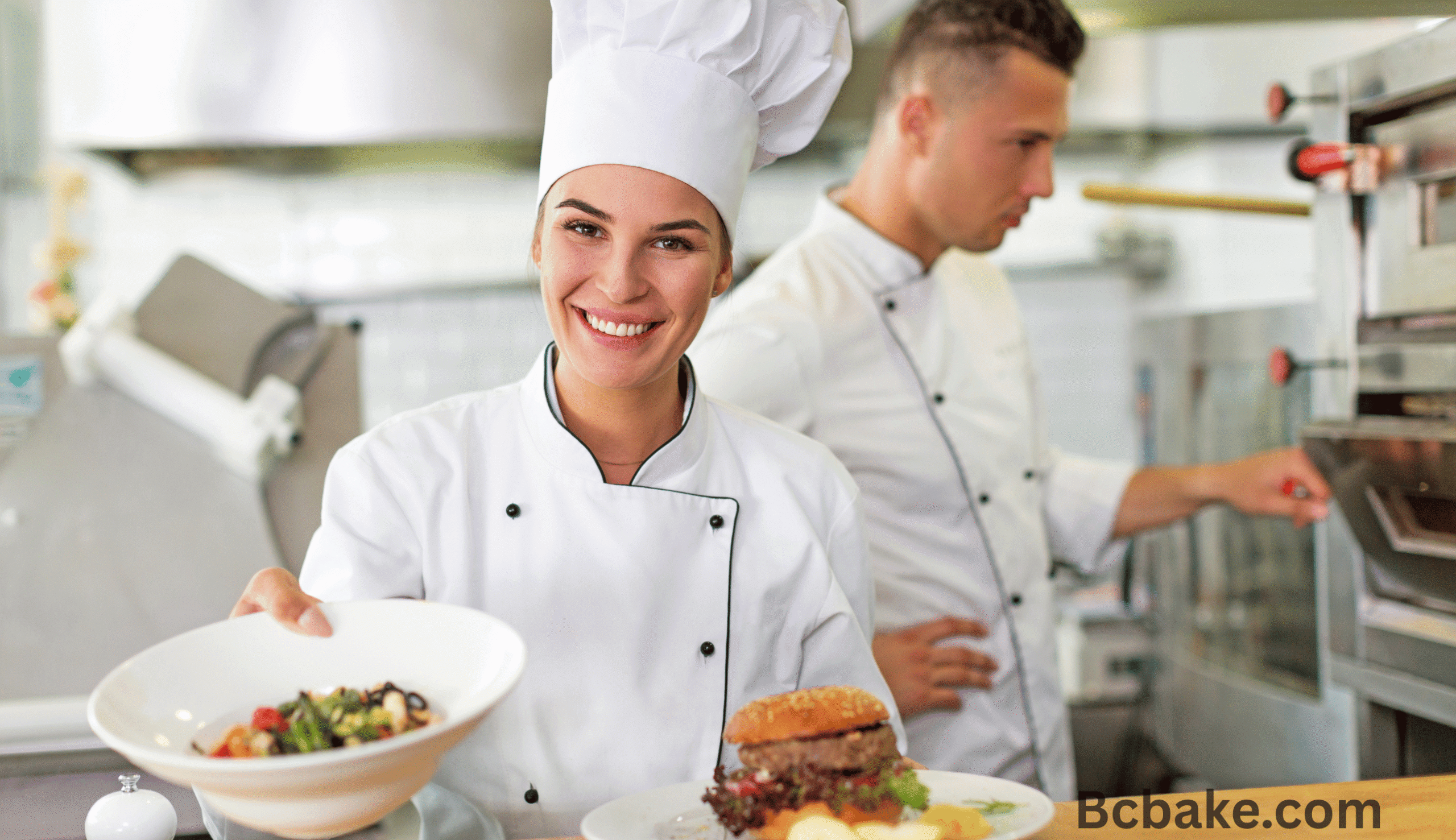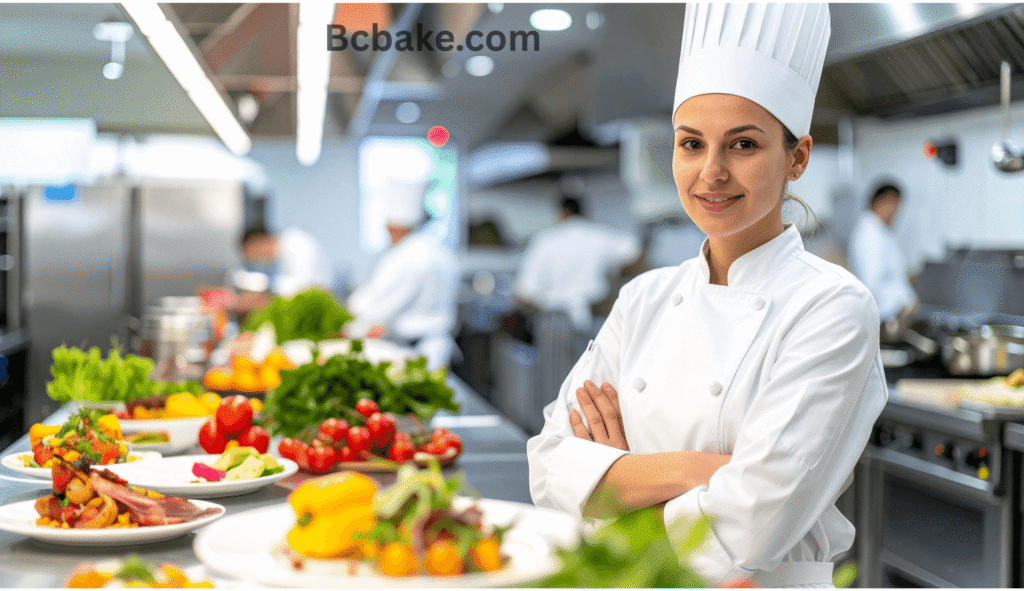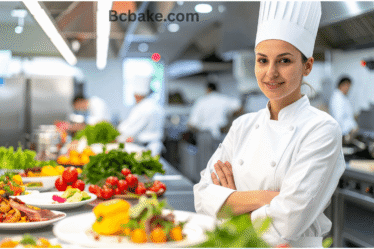
What comes to mind when you imagine a professional chef? Most likely, it’s a tall, white hat, known as a chef’s cap or toque blanche, perched on their head. But why do chefs wear tall hats?
The iconic white chef’s hat has endured from ancient times to modern kitchens.
This hat represents the role of the chef, their skill, experience, and commitment to cleanliness.
In this guide, we’ll explore the origins of the chef’s hat, how it has evolved over time, and why it remains relevant in today’s culinary world.
The Origins of the Toque Blanche
The tall, pleated white chef’s hat, also known as the toque blanche, can trace its lineage back centuries.

Some culinary historians link it to Assyrian culture, where royal cooks wore head coverings to distinguish their high rank in the palace.
However, the modern toque blanche we recognize today is largely attributed to French chef Marie-Antoine Carême.
Read also: How to Host a Brunch with Friends: Planning, Decor, and Menu Inspiration
Known as the founder of grande cuisine, Carême believed that chefs should present themselves with dignity, much like members of royal courts.
To reinforce this idea, he designed tall, white, pleated hats that mimicked a royal crown, thus establishing the chef’s hat as a status symbol in the kitchen.
Why Do Chefs Wear Hats in the Kitchen?
Chef hats aren’t just for show; they serve real, practical functions in a professional kitchen.
From maintaining hygiene to symbolizing rank and tradition, proper hat use helps maintain standards, organization, and culinary pride in a variety of food production environments.
- Hygiene and Food Safety: Chef hats help prevent forehead sweat and loose hair from contaminating food, protecting public health. Whether a toque blanche or a disposable hat, proper use supports food safety regulations and hygiene compliance in busy kitchens.
- Hierarchy and Rank in the Kitchen: The height of a chef’s hat often reflects experience and authority. Executive chefs typically wear the tallest hats, visually reinforcing the hierarchy in the kitchen within the Brigade de Cuisine and bringing clarity to team and leadership structure.
- Culinary Tradition and Prestige: Wearing a hat maintains culinary tradition and demonstrates professional pride. From the white toque blanche to dark hats, these styles connect today’s chefs with their historical roots and honor practices passed down through generations.
- Symbolism of Skill: Legend has it that the 100 pleats of a chef’s hat represent 100 ways to cook an egg or 100 different French sauces. Although symbolic, it honors the mastery and discipline that chefs develop, especially in classical culinary institutions and training programs.
- Uniform and Professionalism: Chef hats are an essential part of a professional kitchen uniform. Whether a classic toque, a square hat, or a baker’s cap, each style promotes uniformity, elevates presentation, and caters to specific roles in the kitchen, restaurants, or catering events.
What Does a Chef’s Uniform Consist of?
A chef’s uniform is more than just clothing; it reflects tradition, professionalism, and safety in the kitchen.
Each piece, from the tall hat to the non-slip shoes, serves a specific function. Understanding what goes into a chef’s uniform helps explain its vital role in food safety and culinary culture .
1. Toque Blanche (Chef Hat)
The tall toque blanche symbolizes rank and experience in the kitchen. Its height and pleats often reflect the chef’s level of expertise.
See now: Plantain Chips Recipes: 5 Easy Ways to Make Crispy Homemade Chips
Beyond tradition, the cap serves a practical purpose by keeping hair in check and helping maintain food safety standards in professional kitchens.
2. Double-breasted jacket
The double-breasted chef’s jacket serves both practical and symbolic purposes. Made from durable cotton, it offers vital protection against heat, splashes, and burns in high-temperature environments.
The reversible front design allows chefs to instantly hide stains, maintaining a clean and professional appearance.
Beyond its function, the jacket represents discipline, experience, and the prestigious role chefs play in the culinary world.
3. Chef Pants
Typically decorated with a black and white checkered pattern, chef pants help conceal spills and stains during long shifts.
They’re made with breathable, durable materials to ensure comfort and freedom of movement in the high-pressure environment of a professional kitchen .
4. Apron
Worn over the jacket and tied around the waist, the apron acts as an additional barrier against spills and burns. It can be quickly removed if soiled or in an emergency, helping to prevent injuries.
Check out: Vegetable Soup with Meat: Ingredients, Cooking Steps & Health Benefits
In addition, the apron contributes to the clean and professional appearance required for kitchen duties involving direct customer contact.
5. Non-slip shoes
In fast-paced kitchens where spills and slick floors are common, slip-resistant shoes are a must for every chef.
These shoes are designed not only to prevent accidents but also to offer maximum comfort during long hours on your feet.
They help protect against sharp objects, hot spills, and heavy cookware, making them an essential part of a chef’s uniform that ensures both hygiene and mobility.
What Do the 100 Pleats on a Chef’s Hat Mean?
One of the most enduring myths about the toque blanche is that its 100 folds symbolize the number of ways a chef can prepare French sauces or cook an egg.
While this story is charming, it’s probably more of a metaphor for culinary mastery. However, the pleats do represent experience and knowledge.
In traditional kitchen hierarchies, only the most experienced head chef wore a hat with all 100 pleats, symbolizing their vast experience in the culinary arts.
Variations in Hat Styles: From Classic to Contemporary
Not all chefs wear the imposing toque blanche. Today’s kitchens feature a wide variety of hat styles adapted to different cuisines, comfort needs, and fashion cultures:
- Snug-fitting caps: Often worn in fast-paced kitchens or by line cooks, these snug-fitting caps keep sweat from the forehead and hair under control.
- Black chef hats: A modern and stylish alternative seen on dark chef uniforms in high-end restaurants.
- Baker’s hats: Soft, flat caps traditionally worn in bakeries.
- Disposable Caps: Practical for one-time events or catering professionals who need quick and hygienic options.
- Square hats: Square-shaped hats popular in some culinary schools and Japanese cuisines.
Read also: How to Host the Perfect Barbecue Party: 8 Tips for the Ultimate Summer Cookout
Frequently Asked Questions: Chef Uniforms
Does the Height of a Chef’s Hat Have Any Meaning?
The height of a chef’s hat known as a toque, has long symbolized rank and expertise in the culinary world.
Traditionally, the taller the toque, the higher the chef’s position, with the executive chef wearing the tallest one.
Some toques were said to have 100 pleats, each representing a unique way to cook an egg, a true mark of mastery in the kitchen.
Which Chef Wears the Tallest Hat?
The executive chef traditionally wears the tallest hat in the kitchen. This tall hat, or toque, symbolizes authority, experience, and leadership over the entire culinary team.
Its height visually distinguishes the executive chef from the other ranks within the brigade system.
What Fabrics Are Best for Chef Uniforms?
The best fabrics for chef uniforms are cotton, polyester-cotton blends, and synthetic moisture-wicking fabrics.
Cotton offers breathability and comfort, while polyester-cotton blends provide durability and wrinkle resistance.
Moisture-wicking fabrics keep chefs cool in hot kitchens by wicking sweat away from the body.
Conclusion: The Enduring Symbol of the Chef’s Hat
From ancient Assyrian kitchens to today’s Michelin-starred restaurants, the chef’s hat has remained a powerful emblem of skill, discipline, and culinary pride.
While its height and pleats once signified rank and mastery, it continues to represent professionalism and respect for tradition.
Every part of a chef’s uniform; from the crisp jacket to the non-slip shoes plays a role in ensuring hygiene, safety, and excellence in the kitchen.
The toque blanche may have evolved in style over centuries, but its meaning endures: it’s a badge of honor for those who dedicate their lives to the art of cooking.
Whether you’re an aspiring cook or a seasoned professional, wearing the chef’s hat isn’t just about appearance, it’s about carrying forward the legacy of culinary craftsmanship with pride, precision, and passion.


